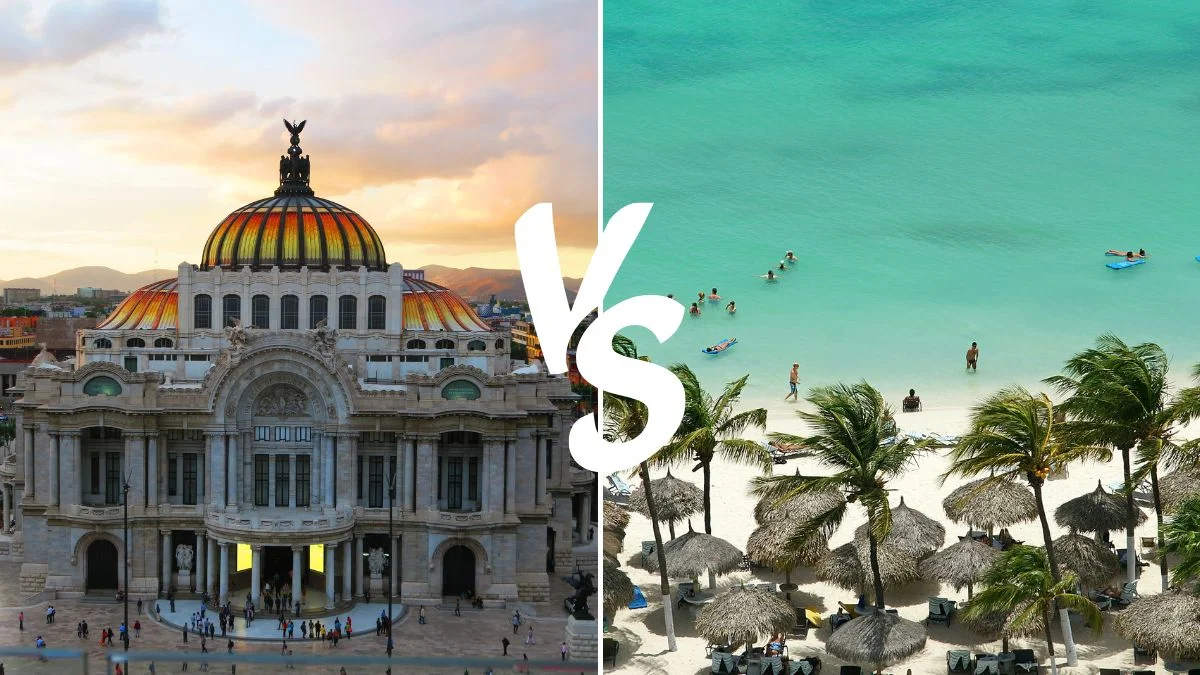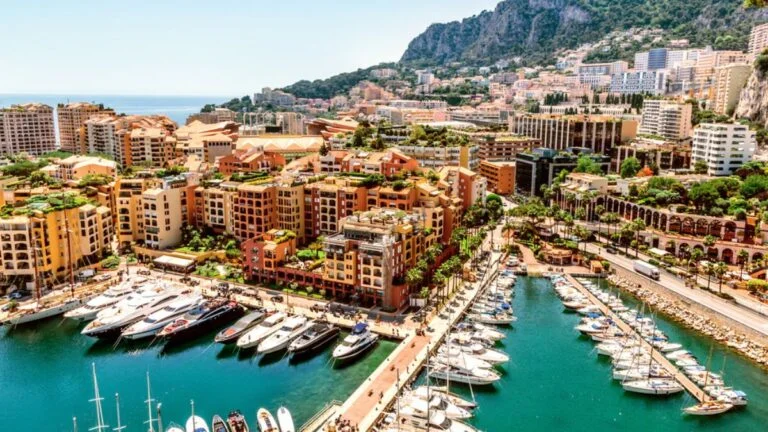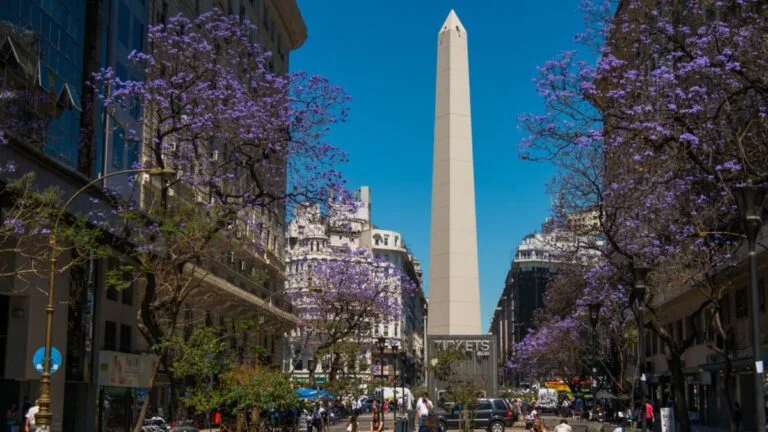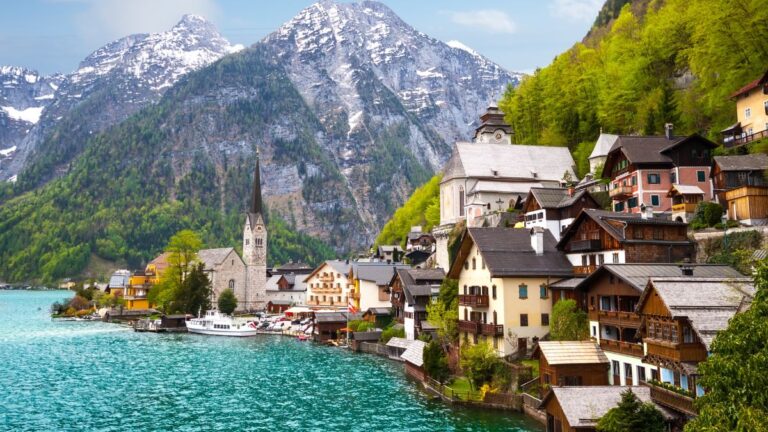Aruba Vs. Mexico: Which is the Better Vacation Destination?

As participants in Amazon Associates and other programs, we earn from qualifying purchases. This comes at no additional cost to you. For more details, see our Affiliate Disclosure.
When it comes to vacationing in a paradise of azure seas, soft sands, and sun-drenched days, two destinations that invariably surface are Aruba and Mexico. Both are renowned for their unique blend of culture, natural beauty, and vibrant nightlife. Yet, they each offer distinctly different experiences, and the best choice ultimately depends on the type of vacation you seek.
This article will provide an in-depth comparison between Aruba and Mexico, exploring the attributes that define their appeal as top-notch holiday destinations.
Introduction to Aruba: A Brief Overview
Aruba, a tiny Dutch Caribbean island located off the coast of Venezuela, is often referred to as “One Happy Island”. This is not just a marketing slogan; it’s a reflection of the island’s overall ambiance and its friendly locals. Measuring just about 20 miles long and 6 miles wide, Aruba boasts pristine, white-sand beaches, crystal-clear turquoise waters, and a nearly perfect weather year-round, thanks to its location outside the hurricane belt.
Apart from its natural beauty, Aruba has a rich history and vibrant culture. Its Dutch heritage is visible in the pastel-colored architecture of its capital, Oranjestad, while influences from more than 90 different nationalities add diversity to the island’s cultural tapestry. The official languages are Dutch and Papiamento, but English and Spanish are widely spoken, making it an easy destination for many travelers.
From exploring the rugged landscapes of Arikok National Park, delving into the island’s history at the Archaeological Museum, to indulging in water sports, shopping, and enjoying its varied cuisine, Aruba offers a range of experiences.
The island also takes pride in its sustainable tourism practices, with a goal to become completely fossil fuel-free by 2020. Aruba, though small in size, has a big personality that attracts tourists from all corners of the globe.
Introduction to Mexico: A Brief Overview
Mexico, the third-largest country in Latin America, is a land of contrasts and a fusion of modernity and ancient civilizations. With its diverse landscapes that stretch from the Pacific Ocean to the Gulf of Mexico, it boasts some of the world’s most beautiful beaches, vibrant cities, colorful towns, and ancient ruins.
Mexico’s rich history is deeply rooted in its pre-Columbian civilizations, most notably the Maya and the Aztecs, whose influence is evident in the country’s culture, language, and architecture. Visitors can explore the remnants of these ancient civilizations in places like Teotihuacán, Chichén Itzá, and Tulum. The country’s colonial history is also on full display in cities like Mexico City, Puebla, and Guanajuato, where beautiful baroque churches and grand plazas abound.
Spanish is the official language, but English is widely understood in tourist areas. Mexican cuisine, recognized by UNESCO as an Intangible Cultural Heritage of Humanity, offers a myriad of flavors from different regions, with dishes like tacos, enchiladas, mole, and chiles en nogada.
With vibrant festivals like Day of the Dead and Cinco de Mayo, Mexico offers a rich cultural experience. Its cities offer everything from world-class museums and art galleries to bustling markets, while its coastal resorts like Cancún, Puerto Vallarta, and Playa del Carmen offer stunning beaches and water activities. With something for every type of traveler, Mexico is a destination that promises an unforgettable experience.
Climate Comparison: Aruba Vs. Mexico
When planning a vacation, understanding the climate of your chosen destinations is essential as it significantly impacts your experience and the activities you can engage in. Here, we will compare the climates of Aruba and Mexico, two distinctly different regions.
Aruba
Aruba, situated in the southern Caribbean, enjoys a tropical but arid climate. It is characterized by warm, sunny weather year-round, with average temperatures hovering around 82°F (28°C). The island lies outside the hurricane belt, so it’s less prone to tropical storms, making it a popular destination, especially during the Atlantic hurricane season from June to November.
Aruba experiences a relatively low annual rainfall, most of which occurs during the latter part of the year. However, even during the ‘rainy season’, showers are typically brief and sporadic, rarely impacting vacation plans. The constant trade winds provide a refreshing breeze that helps mitigate the heat, particularly on the beaches.
Mexico
Mexico, on the other hand, has a more diverse climate due to its vast size and geographical variation. The country spans multiple climate zones, from arid deserts in the north to tropical rainforests in the south. Coastal resort areas, like Cancun and Puerto Vallarta, experience a tropical climate, with temperatures usually between 70°F and 90°F (21°C – 32°C). These regions have a distinct dry season (November to May) and wet season (June to October), with the latter often coinciding with the hurricane season.
Interior and high-altitude areas, including Mexico City and Guanajuato, have a more temperate climate, with cooler temperatures, especially in the evenings. Depending on where and when you’re planning to visit in Mexico, you could experience anything from a cool, dry climate to a hot, humid one.
While Aruba offers more predictability in terms of weather, Mexico offers a range of climates depending on the region and time of year.
Culture and Heritage: Aruba Vs. Mexico
The rich cultural heritage and traditions of Aruba and Mexico reflect their unique histories, offering travelers vibrant and diverse experiences.
Aruba
In Aruba, the culture is a lively blend of influences from the indigenous Caquetio people, the Spanish, Dutch, African, and a variety of other nationalities. The most noticeable influence is the Dutch, visible in everything from the language – Papiamento, a creole language that combines elements of Dutch, Spanish, and Portuguese – to the colonial architecture. Yet, Aruba also celebrates its native heritage, particularly during the annual Bon Bini Festival, which showcases traditional music, dance, and food.
Aruban society is known for its friendly and hospitable locals, and a visit to the island wouldn’t be complete without sampling its diverse culinary scene, where you can find everything from Dutch pancakes to fresh Caribbean seafood.
Mexico
Mexico, on the other hand, has a deeply rooted culture shaped by indigenous civilizations like the Maya and Aztec, as well as Spanish colonial influence. Mexico’s cultural wealth is evident in its language, food, music, and architecture. Its historical sites like Teotihuacán and Chichén Itzá are testament to its ancient civilizations, while the baroque churches and grand plazas in cities like Mexico City and Puebla reveal its colonial history.
Mexican cuisine, recognized by UNESCO as a Cultural Heritage of Humanity, offers a rich tapestry of flavors and dishes that vary by region. The country’s vibrant festivals like the Day of the Dead (Día de los Muertos) and Cinco de Mayo showcase its colorful traditions and customs.
While Aruba offers a melting pot of cultures with a significant Dutch influence, Mexico is a rich tapestry of ancient civilizations, colonial history, and regional diversity. Both destinations provide immersive cultural experiences that are sure to enrich any vacation.
Culinary Delights: A Taste of Aruba and Mexico
Food can be a key determinant of a memorable vacation. The local cuisines of Aruba and Mexico offer a culinary journey that reflects their diverse cultural influences and regional ingredients.
Aruba
Aruban cuisine is a delightful blend of flavors influenced by the Amerindian, African, Dutch, Spanish, and Portuguese cultures that have shaped the island. The ocean yields a bounty of fresh seafood, with dishes like Aruban-style ‘Keri Keri’ (a dish made from fish), and ‘Aruba’s Dradu’ (grilled fish).
Staple ingredients include maize, goat meat, and locally grown vegetables and fruits. Aruba’s national dish, ‘Keshi Yena’, is a must-try – it is a large round ball of cheese filled with spiced meat, usually chicken. Dutch influence can be seen in the widespread availability of Dutch cheeses and pastries.
Mexican
Mexican cuisine, on the other hand, is recognized worldwide for its depth and complexity. From the corn-based dishes of the Mayan region to the hearty meat dishes of the north, every region has its unique specialties. Staples include corn, beans, chili peppers, and a vast array of fruits and vegetables. Iconic dishes include tacos, enchiladas, tamales, and mole, a rich sauce with variations throughout the country.
Seafood lovers should not miss the ceviche and grilled fish of the coastal regions. A trip to Mexico is incomplete without trying the street food – stands selling ‘tacos al pastor’, ‘churros’, and ‘elotes’ (grilled corn) are common sights. Mexican beverages, too, deserve a mention, with drinks like Tequila, Mezcal, and the non-alcoholic ‘Horchata’ being deeply embedded in the country’s culinary culture.
While Aruba’s cuisine offers a blend of flavors from multiple cultures with a noticeable Dutch influence, Mexican cuisine delivers a diverse and rich culinary experience deeply rooted in its indigenous and Spanish colonial history. Both are sure to offer delightful gastronomic adventures to food-loving travelers.
Beaches and Natural Attractions: Comparing Scenic Beauty
Aruba and Mexico, blessed with stunning natural beauty, boast some of the world’s best beaches and natural attractions. Whether you prefer lounging on the beach, exploring natural parks, or diving into vibrant marine life, both destinations offer something for everyone.
Aruba
Aruba, often referred to as “One Happy Island,” is renowned for its pristine, white-sand beaches and crystal-clear turquoise waters. Eagle Beach, frequently rated one of the best beaches in the world, is known for its wide sandy shore and iconic Divi Divi trees. Palm Beach offers calm waters perfect for swimming and a lively atmosphere with numerous beach bars and water sports activities. For those seeking a more secluded experience, Arashi Beach and Mangel Halto offer tranquility and excellent snorkeling opportunities.
Beyond the beaches, Aruba’s Arikok National Park covers nearly 20% of the island, offering a rugged landscape of cacti-covered hills, hidden caves, and unique rock formations. Natural Pool, a secluded swimming hole protected by volcanic rocks, is one of the park’s highlights.
Mexico
Mexico, on the other hand, offers a vast range of beach and natural experiences due to its size and geographical diversity. Cancun and Riviera Maya in the Yucatan Peninsula are famous for their long stretches of white sand beaches and clear Caribbean waters. Tulum, apart from its stunning beach, is known for its cliff-top Mayan ruins. The Pacific coast states of Jalisco and Nayarit offer picturesque beaches like Playa Los Muertos in Puerto Vallarta and Playa del Amor in Marietas Islands.
Mexico’s natural attractions are as diverse as its beaches. The country’s biosphere reserves, such as Sian Ka’an and El Vizcaíno, offer wildlife and birdwatching opportunities. The underwater art museum in Cancun, MUSA, offers a unique scuba diving and snorkeling experience.
While Aruba provides a quintessential Caribbean beach experience coupled with rugged desert landscapes, Mexico offers a wide array of experiences ranging from Caribbean and Pacific coast beaches to diverse biosphere reserves and unique attractions like underwater museums.
Nightlife and Entertainment: Aruba Vs. Mexico
The nightlife and entertainment scenes in both Aruba and Mexico provide a variety of options for travelers, from tranquil evenings under the stars to energetic parties that last until dawn.
Aruba
In Aruba, the nightlife scene is vibrant yet laid-back. Oranjestad, the capital city, is the hub for night activities, with a concentration of casinos, bars, and nightclubs. Places like the Stellaris Casino, the largest casino in Aruba, and Gusto Night Club Aruba are popular amongst tourists.
For a more local experience, visitors can enjoy a beachside barbecue with live music. Aruba’s nightlife also features traditional dance performances and Carnival shows that provide insights into the local culture.
Aruba also offers the unique experience of a moonlight dinner or cocktail cruise, where one can enjoy the Caribbean night sky from the deck of a catamaran. For movie enthusiasts, there are outdoor and drive-in cinemas providing an interesting twist to a movie night.
Mexico
Mexico, with its vast size and diversity, offers an even wider range of nightlife and entertainment options. Mexico City, the capital, is known for its upscale nightclubs, tequila bars, and live music venues that showcase everything from jazz to traditional mariachi music.
Resort areas like Cancun, Playa del Carmen, and Cabo San Lucas are famous for their beach clubs, nightclubs, and bars with DJs from around the world. Coco Bongo, with locations in Cancun and Playa del Carmen, is renowned for its high-energy shows that combine acrobats, concerts, and dance music.
For a quieter evening, consider a traditional Mexican fiesta, complete with folkloric dance and music performances, or a romantic beachfront dinner.
Whether you’re looking for a relaxing evening of local cultural experiences or a lively party scene, both Aruba and Mexico offer an array of options to cater to different tastes and moods.
Safety and Accessibility: Traveling in Aruba and Mexico
When planning a vacation, safety and accessibility are crucial considerations. Both Aruba and Mexico have areas that are highly frequented by tourists, and they’ve put measures in place to ensure that visitors feel safe and welcome.
Aruba
Aruba is known for being one of the safest islands in the Caribbean. The local government has prioritized tourism safety, and there is a visible police presence in tourist areas. Like anywhere, petty crimes such as pickpocketing can occur, so it’s advisable to always take general precautions, such as not leaving belongings unattended.
Accessibility in Aruba is generally excellent. The island’s small size makes it easy to explore, whether by car, bike, or on foot. English is widely spoken, which simplifies communication for many tourists. The Queen Beatrix International Airport is well-connected with direct flights from many international destinations, and cruise ships frequently dock in the capital, Oranjestad.
Mexico
Mexico, due to its large size, has areas that are safer than others. The popular tourist areas, like Cancun, Riviera Maya, and Los Cabos, have a strong security presence and are generally safe. However, it’s always important to stay informed about the current security situation and travel advisories, especially when venturing beyond these areas.
Mexico’s accessibility varies by region. Major cities and tourist areas are well-serviced by public transportation and taxis, while remote areas might require a private vehicle. The country has an extensive network of airports, making domestic and international travel relatively easy. Spanish is the official language, but English is commonly spoken in tourist areas.
Both Aruba and Mexico are well-equipped to welcome tourists safely, but like any travel destination, it’s important for visitors to remain vigilant and informed about their surroundings. Accessibility in both destinations is facilitated by well-established tourism infrastructure, though it varies more widely across Mexico due to its larger size.
Accommodation Options: Aruba Vs. Mexico
The choice between Aruba and Mexico might also hinge on the type of accommodations each destination offers. Whether you prefer a luxurious resort, a budget-friendly hotel, or a quaint bed and breakfast, both destinations cater to a wide range of preferences and budgets.
Aruba
Aruba, though a small island, offers a wide array of accommodation options. The high-rise hotels area in Palm Beach offers some of the most luxurious resorts in the Caribbean, such as the Ritz-Carlton Aruba and the Hyatt Regency Aruba Resort and Casino, complete with pools, restaurants, casinos, and beachfront access. For a quieter, more laid-back vibe, the low-rise hotels area in Eagle Beach offers charming boutique hotels and quieter resorts.
Aruba also offers many budget-friendly hotels and guesthouses, especially in Oranjestad, as well as vacation rentals throughout the island, allowing you to live like a local. Regardless of where you stay, the island’s small size ensures that you’re never far from a beach.
Mexico
Mexico, given its vast size and diversity, offers an even wider range of accommodation options. In luxury resort areas like Cancun, Playa del Carmen, and Los Cabos, you’ll find a plethora of all-inclusive resorts like the Le Blanc Spa Resort in Cancun and the Secrets Maroma Beach Riviera in Playa del Carmen.
Mexico’s colonial cities, like Mexico City, Oaxaca, and Guanajuato, offer a range of boutique hotels set in beautifully restored historic buildings, offering a charming blend of old-world elegance and modern comfort. Budget travelers will find numerous hostels, budget hotels, and guesthouses throughout the country. Vacation rentals, from beachfront villas to city apartments, are plentiful.
Whether you’re looking for the luxury of a beachfront resort, the charm of a boutique hotel, or the affordability of a budget hostel, both Aruba and Mexico offer a wide range of accommodations to suit every taste and budget.
Cost of Vacation: Budgeting for Aruba and Mexico
When budgeting for a vacation in Aruba or Mexico, several factors come into play, including the cost of accommodation, food and drink, transportation, and activities. Both destinations can cater to a range of budgets, but it’s worth noting some general differences.
Aruba
Aruba, while offering some budget-friendly options, is generally considered a higher-cost destination due to its high-end resorts and dining options. Dining out, especially at beachfront restaurants, can be pricey, and imported goods can also add to your expenses.
However, the cost can be offset by choosing budget accommodations, dining at local eateries, and taking advantage of free or low-cost activities like beach lounging and hiking in Arikok National Park.
Mexico
Mexico’s cost can vary significantly depending on the region and the type of vacation you’re planning. Luxury resorts in Cancun, Playa del Carmen, or Los Cabos can be comparable in price to Aruba’s high-end offerings. However, Mexico also offers more options for budget travel, especially in less touristy areas.
Street food and local markets in Mexico offer delicious meals at very affordable prices. Moreover, many historical sites and museums in Mexico are free or have minimal entrance fees.
Here’s a basic cost comparison table to give you an idea of what you might expect to spend. These are average costs and may vary depending on the specific choices you make during your vacation:
| Expenses | Aruba ($) | Mexico ($) |
|---|---|---|
| Budget Accommodation (per night) | 50 – 100 | 20 – 50 |
| Luxury Accommodation (per night) | 300 – 500 | 200 – 400 |
| Meal at an inexpensive restaurant | 15 – 20 | 5 – 10 |
| Meal at a mid-range restaurant | 30 – 50 | 15 – 30 |
| Local Transportation (one-way ticket) | 2 – 4 | 1 – 2 |
| Taxi Start (Normal Tariff) | 4 – 6 | 2 – 4 |
| Domestic Beer (0.5 liter draught) | 3 – 5 | 1 – 3 |
| Water (0.33 liter bottle) | 1 – 2 | 0.5 – 1 |
| Historical Sites/Museums | 10 – 20 | 0 – 5 |
While both Aruba and Mexico can accommodate a range of budgets, the average cost of travel tends to be higher in Aruba. As always, costs can be significantly reduced or increased based on personal choices and preferences.
Unique Experiences: What Sets Aruba and Mexico Apart
Each travel destination is unique, offering experiences that set it apart from others. This is certainly true for both Aruba and Mexico, where cultural, natural, and historical elements combine to create a myriad of unforgettable moments.
Aruba
In Aruba, one of the unique experiences is exploring the island’s diverse landscapes. Despite its small size, Aruba is home to a desert-like interior dotted with cacti, a stark contrast to its pristine, white-sand beaches. Arikok National Park, with its caves, natural pools, and indigenous rock paintings, is a haven for adventure lovers.
The “Bon bini” festival in Aruba is a weekly folkloric music and dance event that encapsulates the warm hospitality of the Aruban people. And don’t forget about flamingo spotting on the private Renaissance Island. These pink visitors are a sight to behold and make for wonderful photography.
Mexico
Mexico, on the other hand, offers a deep dive into ancient history. Exploring the well-preserved ruins of ancient civilizations like the Mayans and Aztecs, such as Chichen Itza, Teotihuacan, and Tulum, can feel like stepping back in time.
The experience of Mexico City, one of the largest cities in the world, is unique in itself. The mix of colonial architecture, world-class museums, vibrant street markets, and eclectic food scene is unmatched. Don’t miss out on a traditional Mexican fiesta or a Mariachi performance.
Natural wonders abound in Mexico too – swimming in the crystal-clear cenotes (natural sinkholes), witnessing the annual monarch butterfly migration, and snorkeling in the Great Maya Coral Reef are experiences you won’t find elsewhere.
Both Aruba and Mexico offer unique experiences that cater to a wide range of interests. Whether it’s the unusual desert-meets-beach landscapes and welcoming culture of Aruba or the rich history, bustling cities, and natural wonders of Mexico, there’s plenty to set each destination apart.
Final Verdict: Aruba or Mexico, Which One Should Be Your Next Vacation Destination?
Choosing between Aruba and Mexico largely depends on what you are seeking from your vacation.
If your idea of a perfect vacation revolves around breathtaking beaches, high-end resorts, and a relaxing, laid-back vibe, then Aruba would be your ideal choice. With its consistently sunny weather, friendly locals, and a compact, easy-to-navigate landscape, Aruba is a paradise for beach lovers and those seeking a rejuvenating getaway. It’s also a fantastic choice for those who enjoy water sports such as windsurfing and snorkeling, given the island’s crystal clear waters and steady trade winds.
Aruba’s relative safety, ease of communication (English is widely spoken), and the high standard of its resorts make it particularly appealing to families, couples seeking a romantic escape, and first-time travelers who prefer a straightforward, stress-free vacation.
On the other hand, if you’re after a diverse cultural experience, want to delve into rich historical heritage, or enjoy exploring vibrant cities and natural wonders, Mexico could be the destination for you. With its world-famous cuisine, ancient archaeological sites, and varied landscapes, Mexico is a dream for adventurous travelers, foodies, history buffs, and nature lovers.
Mexico’s extensive coastline also means beach lovers will find plenty to enjoy here, with the added bonus of being able to choose between Pacific and Caribbean beaches. Furthermore, Mexico’s wide range of accommodations and its generally lower cost of living might make it a more appealing option for budget-conscious travelers or those planning a longer trip.
In summary, both Aruba and Mexico have plenty to offer, but your choice should be guided by what you value most in a vacation. Whether it’s the compact, beach-focused luxury of Aruba or the culturally and geographically diverse offerings of Mexico, your decision will ensure a memorable vacation tailored to your preferences.






